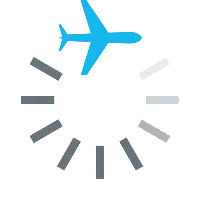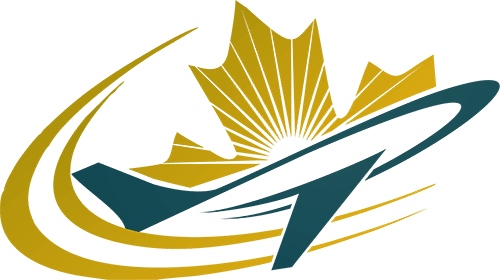Transport Canada Aviation Medical
When first starting out in aviation, students are very overwhelmed with the amount of information they are required to absorb, a new way of learning, and of course the endless amount of tasks they have to worry about when they go home. From studying their Flight Training Manuals to getting ready for their ROC-A Exam; then there is talk of this PSTAR exam and the dreaded Transport Canada aviation medical.
So let’s get into it and look at what is required from you as a new pilot entering aviation. There are four categories of Transport Canada aviation medicals:
- Category 1 Medical: Mostly used by Airline Pilots and Commercial Pilots
- Category 2 Medical: Used only by Air Traffic Controllers
- Category 3 Medical: Mostly used by Private Pilots and Recreational Pilots.
- Category 4 Medical: Used by Recreational Pilot Permit Holders and student pilots.
As you become more of an impact to the public, your medical requirements will increase. The highest category of medical is the Category 1 Medical. Airline and commercial pilots flying the paying public must meet very stringent medical standards in order to safely fly. However, student pilots just learning how to fly only require a Category 4 Transport Canada Aviation Medical, or a medical declaration; the standards are much lower than a Category 1 medical.
I’m a Student, Which Transport Canada Aviation Medical do I Need?
As a student pilot, you at minimum require a Category 4 Medical. We’ll get to that a little bit later. If you are wanting to obtain a private license or become a commercial pilot, you should complete your Category 1 or 3 Medical now to verify you meet the proper standards. It is uncommon but it can happen where student pilots begin flight training only to find out from Transport Canada that they are unable to hold the required medical certificate. Find out now.
Where can I do my Transport Canada Aviation Medical?
Aviation medicals can only be done by Civil Aviation Medical Examiners. Just like your family doctor can’t perform heart surgery on you (although yours might), not all family doctors are qualified to conduct aviation medicals. To find a medical examiner or aviation medical clinic near you, visit the Transport Canada website here.
It will cost money, and this is normal. For a category 1 medical, you will be required to do an ECG and a hearing test at your own cost.
The Category 4 Medical

If you are a relatively healthy person and are confident that you can hold a medical, we highly suggest you work right now on your category 4 medical. This is also known as a Medical Declaration. Essentially, fill out Part A of the form, print it and visit your family doctor. Better yet, if you have known them for a long time and they know your medical history, you might be able to fax/e-mail to them and have them fill it out.
All the doctor is doing is declaring that to the best of their knowledge, you have never met any of the conditions in Part 2. This should not require an exam, a hearing test or anything. It is a declaration. It is paperwork. This should be free, although some doctor’s offices may charge you for completing paperwork.
Once the form is completed and your family doctor has signed Part C, it is time to mail it in or scan and send via e-mail to your local Transport Canada office. Normally we would make the e-mails accessible to you by listing them here, but they change at the whim of a new Minister of Transport and our page would never be up to date. So instead, visit the Transport Canada aviation medical contact page and find the e-mail of your regional Medical Office AND Regional Service Center. We recommend e-mail the same form to BOTH e-mails although we have been told to only send them to the Regional Service Centers.
What’s the advantage of a Category 4 Medical Form?
Completing a Category 1 or 3 Medical can take some time. By the time the appointment gets booked, you get your ECG/Audiogram done if required, it is sent to Transport Medicine, processed and sent back to you, it could be up to 6 months or more. With the Covid related pandemic, 6 months was what lucky people dealt with in some parts of the country. So the main advantage? Time.
As a student pilot, you can complete ALL of your training towards your Private Pilot License, including your exam and flight test with a Category 4 Medical. However, you cannot actually be issued a license until you hold a valid Category 3 or 1 medical. This means that while you wait for the paperwork to be processed for your Category 1 or 3 medical, you won’t be held up at your first solo or at any part of your flight training. Once you obtain a Category 4 Medical, you will get a license number from Transport Canada which will be used on your Student Pilot Permit. This 6 digit number will also be used to on all of your government paperwork including your letter of recommendations and exam.
What is involved in a Transport Canada aviation medical? What happens in an aviation medical exam?
Medicals are governed by the Transport Canada Guide for Aviation Medical Examiners and mostly involve pretty routine items. The doctor will go over your medical history, test your vision and hearing, conduct a colour blindness test, test your urine (not for drugs), and they may possibly send you for an ECG and audiogram depending on the category of medical you are applying for, and a physical examination. Any issues, such as you requiring glasses, are noted on your file.
Final Note
Our final note to end this post on medicals related to honesty. Doctors have taken an oath to help humanity get healthier. Although it may be tempting to hide medical conditions in favour of flying, it doesn’t actually help anyone. Most importantly, it does not help you, the person suffering from whatever condition it is that you are hiding. Medical examiners will examine you, your eyesight, your colour blindness, hearing etc,. Yes, they have a duty to report. But their primary duty is to help you become a healthier person.
Don’t hide anything and be honest. Doctors are there to help you achieve your goal.
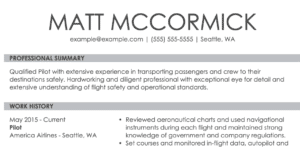
Aviation Resume Writing
Freshly minted commercial pilots in Canada often wonder what the next steps are. After all, they are now eligible to start earning money as a...
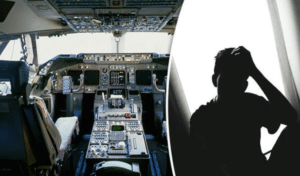
Depression and Medications for Pilots
We get a lot of questions about depression, mental health issues, anxiety, SSRIs, and antidepressant medications from potential students who want to pursue aviation as...
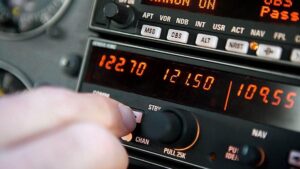
ROC – A: Restricted Operator Certificate with Aeronautical Qualification
There are a lot of misconceptions out there about the ROC A and the legalities surrounding radio usage in Canada. This article will explore and...
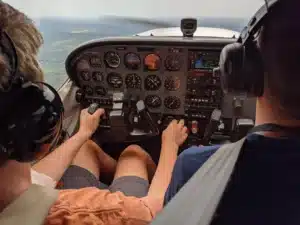
ADHD in Aviation
Attention Deficit Hyperactivity Disorder (ADHD) is a topic of concern when it comes to obtaining a pilot license. It’s crucial to understand these requirements to...
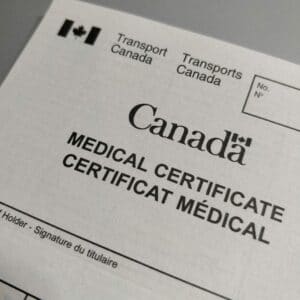
Transport Canada Aviation Medical
Transport Canada Aviation Medical When first starting out in aviation, students are very overwhelmed with the amount of information they are required to absorb, a...
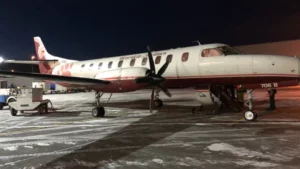
Navigating the IATRA Exam: A Key Step for Aspiring Commercial Pilots in Canada
Embarking on a career as a commercial pilot in Canada is an ambitious and exciting journey, with the Instrument Rating Aeroplane Type (IATRA) exam standing...
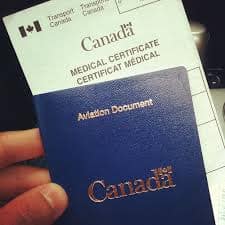
Private Pilot License Canada Timeline | Learn Quickly with Canadian Flight Trainers
Private Pilot License Canada Timeline If you’re interested in pilot training or just started pursuing a private pilot license in Canada, you’ve come to the...

Literacy in Aviation
Literacy in Aviation – Beyond Words and Media Whether we consciously think about it or not, literacy in aviation plays an important role in a...
